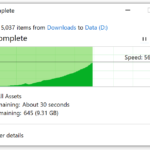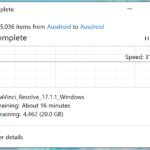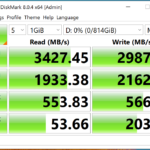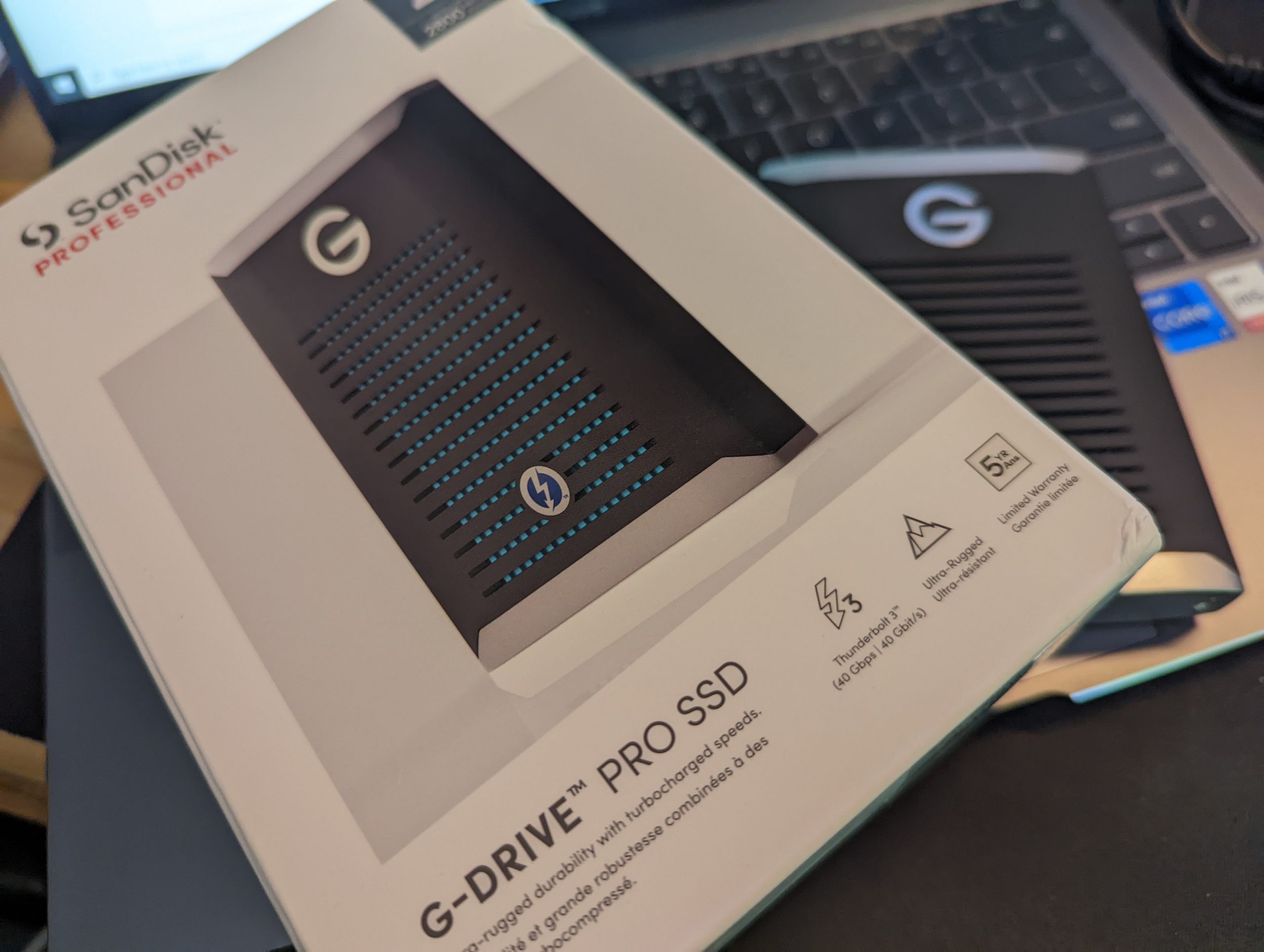If you’ve ever had a portable hard drive fail on you, then you know the pain of data loss. But it’s not just those that can fail, internal drives can fail and cloud storage access isn’t always guaranteed. So it makes sense if you’re regularly on the move to have access to your data via multiple pathways, one of which is a portable drive. Given the comparatively fragile nature of spinning drives, having a portable SSD is starting to move out of the luxury realm into the need to have bracket.
What is it?
You’re looking at a professional range, portable NVMe SSD that can be connected via Thunderbolt 3 (up to 40Gbps) to Windows or Mac devices via the — almost impractically short — USB-C to USB-C cable. It goes a step further than some other drives though with a ruggedized case that will protect your investment and your data from the bangs and knocks it may incur in daily life.
From a practical perspective: The chassis is smaller than what you’ll get with a spinning drive, but larger than other SSDs measuring 112 mm x 80 mm x 17 mm. Despite the physical size of it, being a professional grade drive, the aesthetic successfully walks a fine line between business and the tech look.
The main part of the body is a rubberised material with the ends being metallic, so while they won’t break with a simple drop – be aware you might mark them if you drop the drive on a hard surface like concrete. The cable port is central to the back of the device, possibly the safest/most protected position it could be with a status light on the front of the device in the same position. It looks good, fits comfortably into your carry bag and is light enough that you won’t notice it’s there.
Why do you need an external drive, particularly this big?
This isn’t just about storage for your personal media or backups, there’s a lot more to the picture. In this case, though, it’s fair to say that the drive is aimed at professional content creators given the storage capacity (the review drive is a 2TB model) and transfer speeds. Adding to that the costs involved aren’t exactly easy to swallow for home use, with the 1TB drive costing $599.00 and 2TB costing a hefty $1,149.00.00 at a retail level.
I’m personally very amateur in terms of video footage but, if I’ve been shooting on my phone and GoPro while on the move it’s easy to accumulate over 40GB of footage very quickly. If you’re not planning on editing straight away but still need to get that off your SD cards, then moving to a portable drive can be a great solution. This allows you to playback the media on your laptop while on the move. It also means that when you get back to your base (either home or office) you can easily take the footage and plug it immediately into a desktop machine for playback and editing.
Then there’s the somewhat obvious advantage of having automatic backups for your laptop when the drive is plugged in, or on a scheduled basis. This automation and the speed of backup is both convenient and efficient without interrupting your day.
Performance: Numbers and real world practice
It’s always interesting to look at the real world performance vs the theoretical numbers. Generally speaking, these tests are conducted in a tech lab, transferring large files, on a clean system with nothing else happening.
Other drives often come with a USB-C and USB-A connection cable, this one not so. It comes only with the thunderbolt cable to connect to your pc or laptop by USB-C. While we’re on it, don’t lose the cable since it’s a high quality cable and provides the best transfer speed possible. In theory, this is huge speeds, topping out at 40Gbps, but enough of the theory: Let’s talk real world use!
During a recent review of the Huawei Matebook X Pro, we tested the Sandisk G-Drive Pro and varied results which should be expected. Using Crystal Disk Mark we found the speed topped out at a bit over 34Gbps read speed. But when it came to transferring files around, there were bottlenecks meaning the raw speed of the drive simply can’t be utilised. These particularly include the number and size of files being transported and what else (other than moving files) your system is doing at the time.
In our testing: 28GB of files, including some large videos was moved from the local drive to the G-Drive pro in just under a minute.
The downside to the speed and connectivity chosen is that mobile devices such as phones and tablets can’t provide enough power to the drive for it to connect. My phone detects it as a device requiring charging and provides power, but none of the file management apps I have would read the fact a drive was connected.
Should you buy one?
If you’re carrying a few photos, maybe some home videos and the occasional backup then this is NOT the drive for you.
These are professional grade drives so, clearly, not a device everyone is going to want or need the level of performance it offers. From a perspective of storage for dollars, this is an expensive way to buy storage but where this makes up for the cost is in performance and to take advantage of that performance you’ll need a laptop that’s got Thunderbolt connectivity.
If you’ve gone all in for the big, shiny and super fast portable SSD, then you’ll be happy with the rugged design because it will (sorry Sandisk…) survive a drop or two without any issues. If that’s not enough the lengthy 5 year warranty period provides you quite a bit by way of peace of mind.
The G-Drive Pro Portable SSD is aimed at true power users and professionals who need a lot of space and performance to match. What those users want, Sandisk has absolutely delivered and if you need one, you can find your closest dealer here.










Phil, what’s the transfer performance like, if you don’t have any Thunderbolt ports on your laptop?
Limited to whatever speed your ports are capable of as a best case scenario.
There are far too many variables to give you even a guess number.